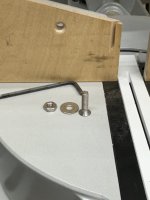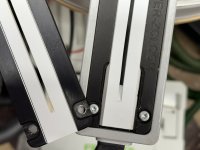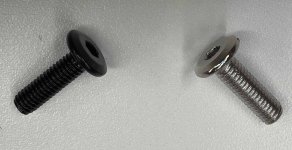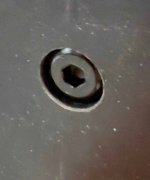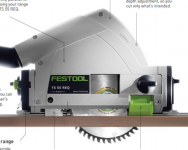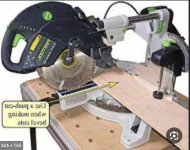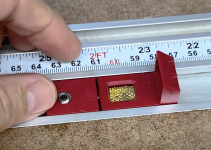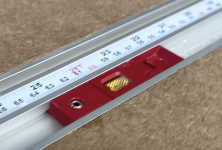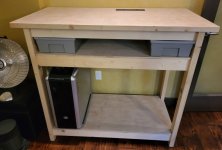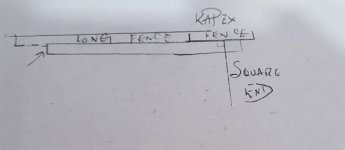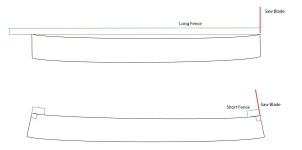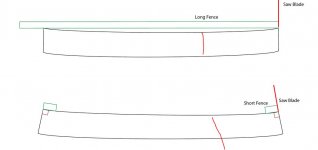Cheese said:
I do the same thing Chuck, that's the reason I never really considered installing the Cube.
The problem with wood faces just screwed to the metal fence is that as they get eaten up, either by repeated usage or by different angles and bevels, you have a replacement problem. With inserts, you just slide in a new one, often tool-lessly.
ChuckS said:
[member=44099]Cheese[/member]
How thick is your aux fence? And what bolts are used?
I use double-faced tape because the fence is thin. I'd prefer bolts.
I use these flat-head bolts:
[attachimg=1]
Which, when recessed in a ½" hole look like this:
[attachimg=2]
For my router table fence, they thread into T-nuts in the aluminum extrusion, so it's an easy matter to loosen them a half turn or so and slide the face left or right. When you go through a hole in the miter saw fence, you can't go that. You either have to machine a groove in the wooden face, or drill a new hole.
I also have the old-style Colliflower ZCI plate. I think of it more as a convenience thing rather than a splinter prevention thing. After all, track saw users don't have a ZCI underneath what they're cutting, unless you count the insulation board some use to save their tabletop/floor.
I really, personally, don't like the sacrificial wood faces screwed to the metal fences approach - be there done that, and over it. Not only do you have the replacement problem when the zero clearance is no longer zero, when you bevel you have to remove screws so that you can slide the metal fence part away and still have sacrificial wood supporting the cut. I suppose one could keep the metal fences slid away full-time and rely on the wood faces for support, but no-one seems to do that. Finally, unless you're doing the latest miter saw fad of having your length stops in the table instead of on a fence, the thickness of the sacrificial wood means you have to have your fence extension at the same level or the flip stop won't reach. That's what I originally did with my save and Incra fence, but like I said, it was a constant pain.

